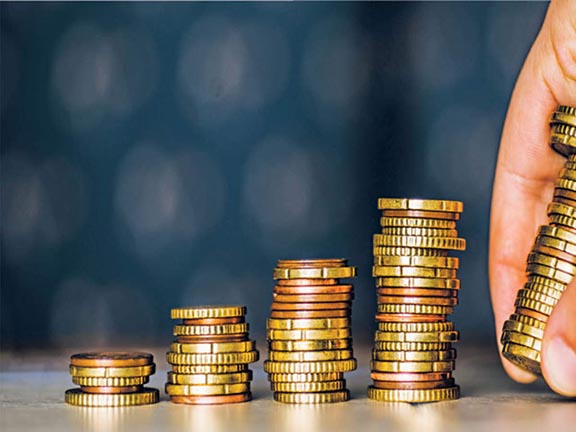Almost everyone remembers the headline. In 2016, the Pakistan Stock Exchange was declared the best performing stock exchange of Asia, with an annual rate of return of 45.5%, and was the fifth-best performing stock index globally. Sure, the stock market is no indicator of the economy, but there was something surprising about this feat. The KSE-100 actually hit its all time high in May 2017.
The market stumbled significantly since then, before again showing signs of rapid improvement between August 2019, and February 2020. Even in the midst of the horrific Covid-19 pandemic in 2020, the country’s KSE-100 Index was up 36% from the end of March. That is the best rebound among major Asian equity indexes.
But it is not just a question of the last few years. If one takes a cursory look at the last few decades, the Pakistan Stock Exchange has, overall, given positive rates of return. Between 1992 and 2019, or the last 28 years, the KSE-100 has had positive annual rates of return in 18 of those years.
The annual rates of return were double-digit in 14 of those years, and in one year (2002) actually in triple digits. If you compare the average returns across asset classes in Pakistan, stocks easily beat gold and real estate in returns. This is an asset class that delivers returns for long-term investors.
And yet.
Despite the breathless headlines, and the hard historical data confirming this is an asset class one should invest in, it is not altogether surprising to hear Pakistanis discount the equity market in their country completely. This can be proven anecdotally – for instance how many of you have families that actively discuss the stock market, as opposed to the value of urban real estate?
But it can also be proven just by looking at the amount of people in Pakistan who have a capital markets account: just 244,000 people, according to data from the Central Depository Company (CDC). That is a paltry 0.11% of the total population. That same figure is 0.81% in Bangladesh, 4.5% in India, and a whopping 62% in the United States.
Herein lies the problem: 62% of the United States is actively involved in the equity market. It is a well known, well documented market. There is a significant amount of information available to the average investor, who is able to make choices. This information symmetry means that some Pakistanis, sitting in Pakistan, are convinced that the best way to make money is to invest not in the Pakistani stock market, but in the US stock market. It is not altogether uncommon to hear about urban, typically middle class to upper middle class professional Pakistanis trying to use their connections – friends, family – to invest in the US.
We are not blaming this method. The promise of steady returns, that too in dollars, is alluring when one is sitting in Pakistan, unsure of how equity markets work here, and also generally concerned about volatility in the market.
We are just here to allay those fears. Because as it turns out, the hype is real. The Pakistan Stock Exchange gives you higher returns than the US – and all you need to do is look at the historical data for it.
While the exchange has been around 1949, a fairer comparison would be to start from the year 1999. There are two reasons for this. First, that is the year that one can reasonably say Pakistan’s equity market actually took the shape and form of a modern exchange. To recap, that is the year that the Securities Exchange Commission of Pakistan was formalized, which is the country’s financial regulator, and in charge of expanding the country’s capital market. The second reason is that that is also the year that ushered in the tech boom in the US, which was to significantly change the range of companies available to buy stocks from (and why we have included the tech-heavy NASDAQ in our comparison).
Then we compile the annual rates of return for the S&P 500, the NASDAQ, and the KSE 100. The S&P 500 is an index that takes into account the 500 largest companies listed on stock exchanges in the US, and is indicative of the stock market. The NASDAQ is the second largest stock exchange by market capitalization in the US.
And here’s what we found. Between January 1, 1999 and June 30, 2020, the annualized dollar return rate for the S&P 500 was 4.4%, and for the NASDAQ was NASDAQ 7.3%. And the KSE-100 easily beat both at 11.7% That, by the way, is in dollars. In rupee terms, the returns for the KSE-100 was 18.2%.
So why do we want to buy US stocks, when good old Pakistani stocks are able to give you better returns in dollar terms?
Interested in learning more about investing in Pakistani stocks? Have another question about personal finance? E-mail your questions to [email protected]. Your identifying information will be kept completely confidential.





































excellant
Sir pls consider rupee devaluation